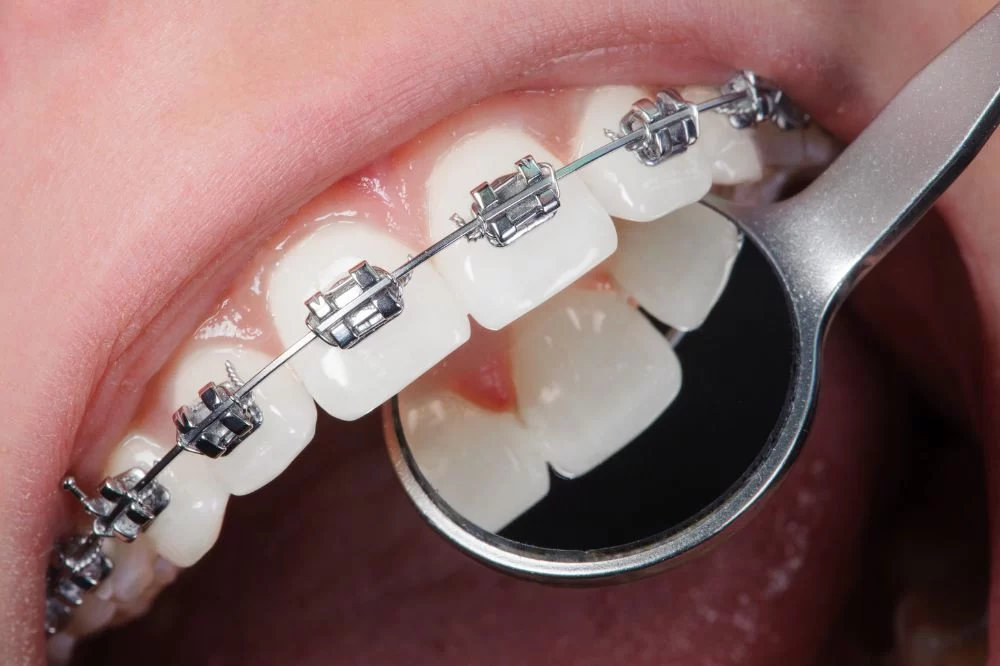
- Preventing Gum Disease After Orthodontic Treatment
- Oral Hygiene Routines for Care Maintenance
- Professional Care and Regular Checkups
- Real-Life Case Study on Gum Disease Prevention
- Choosing the Right Products and Resources
1. Preventing Gum Disease After Orthodontic Treatment
Orthodontic treatment such as braces or clear aligners can dramatically improve your smile and bite, but once the braces come off, maintaining gum health becomes a critical focus. Gum disease, or periodontal disease, is a common risk if oral care is neglected during and after treatment. The complex structure of braces often traps food particles and plaque, which can lead to inflammation and infection in the gums if not properly managed.
Post-orthodontic care is therefore essential to prevent the onset of gum disease. This requires a strategic approach that includes thorough cleaning, avoiding harmful habits, and monitoring for any signs of gum irritation. Emphasizing prevention early on helps ensure that the benefits of orthodontic treatment are long-lasting and that your gums stay healthy and strong.
Understanding the biological changes gums undergo during orthodontic treatment helps explain why care is so important. Teeth movement can sometimes temporarily stress gum tissues, making them more susceptible to bacteria if oral hygiene is inadequate. A proactive mindset towards gum care after braces is the best defense against periodontal complications.
1.1 The Role of Plaque Control
Controlling plaque buildup is the cornerstone of preventing gum disease after orthodontics. Plaque harbors bacteria that inflame gum tissues and can cause gingivitis or more advanced periodontitis if untreated. Using interdental brushes and floss specifically designed for post-braces cleaning can greatly reduce plaque accumulation in hard-to-reach areas.
Routine brushing alone is not enough because traditional toothbrushes may miss spots where brackets were attached or where aligners caused minor irritation. Incorporating a gentle, antimicrobial mouthwash can also aid in reducing bacterial load without irritating sensitive gums.
2. Oral Hygiene Routines for Care Maintenance
After orthodontic treatment, establishing a comprehensive oral hygiene routine is key to gum disease prevention and overall mouth health. This routine should be tailored to address the specific vulnerabilities gums face following braces removal.
A well-rounded daily care routine consists of:
2.1 Brushing Techniques and Frequency
Brush teeth at least twice daily with a soft-bristled toothbrush, focusing on gentle circular motions to stimulate gum tissue and remove plaque. Avoid aggressive brushing that can cause gum recession or damage. Consider electric toothbrushes designed to optimize cleaning with minimal pressure.
2.2 Flossing and Interdental Cleaning
Flossing once daily is critical to reach the tight spaces between teeth where gum disease often starts. Post-orthodontic patients may find flossing challenging; tools like floss threaders or water flossers can simplify the process and improve effectiveness.
2.3 Dietary Considerations
Maintaining a balanced diet that limits sugary and acidic foods helps reduce harmful bacteria growth. Drinking plenty of water throughout the day encourages saliva production, which naturally cleanses the mouth and protects gums.
3. Professional Care and Regular Checkups
Maintaining gum health after orthodontic treatment isn’t only about home care; regular visits to a dental professional are essential. Dentists and hygienists can identify early signs of gum disease and intervene before problems worsen.
Professional cleanings every 3 to 6 months ensure thorough removal of plaque and tartar, especially in areas difficult to reach with home care. Additionally, orthodontists can assess the condition of your teeth alignment and retention devices, ensuring they do not contribute to gum irritation or plaque buildup.
Patients who actively communicate any discomfort, bleeding, or gum sensitivity during checkups can receive tailored advice and treatment to preserve gum health long term.
4. Real-Life Case Study on Gum Disease Prevention
Consider the example of Sarah, a 23-year-old who completed two years of orthodontic treatment with braces. Initially, she struggled with maintaining hygiene around brackets and wires, which resulted in mild gingivitis. After braces removal, Sarah committed to a dedicated oral care routine recommended by her dentist.
By adopting gentle brushing techniques, using interdental brushes, and scheduling professional cleanings every four months, Sarah was able to reverse gum inflammation and maintain healthy gums. Her story illustrates that with proper care maintenance and professional support, the risk of gum disease after orthodontic treatment can be effectively minimized.
Her positive outcome was also supported by advice from Dentistry Toothtruth, where she found specialized oral hygiene products perfect for post-braces care. This highlights the importance of choosing the right tools and expert guidance for lasting gum health.
5. Choosing the Right Products and Resources
Not all dental care products are created equal, especially for those recovering from orthodontic treatment. Specialized toothbrushes, flosses, and mouthwashes designed to target plaque and soothe sensitive gums make a significant difference.
For personalized recommendations and to find the most effective products for gum disease prevention after orthodontics, visit Dentistry Toothtruth. Their expert-curated selection ensures patients receive high-quality items tailored to post-braces oral care needs.
Moreover, their platform offers valuable educational resources and access to professional consultations, reinforcing patient confidence in maintaining gum health long after orthodontic appliances are removed.







 Tend East Nashville4.0 (319 review)
Tend East Nashville4.0 (319 review) Sea Mar Community Health Centers - 11th St3.0 (55 review)
Sea Mar Community Health Centers - 11th St3.0 (55 review) Florida Dental Implant Institute5.0 (67 review)
Florida Dental Implant Institute5.0 (67 review) Brick Dental Studio4.0 (101 review)
Brick Dental Studio4.0 (101 review) Midjersey Family Dentistry4.0 (86 review)
Midjersey Family Dentistry4.0 (86 review) Surprise Endodontics4.0 (170 review)
Surprise Endodontics4.0 (170 review) The Importance of Oral Health Education During Pregnancy for a Healthy Pregnancy
The Importance of Oral Health Education During Pregnancy for a Healthy Pregnancy Best Tips for Brushing Your Teeth Properly for Healthy Gums: Essential Techniques for Oral Health
Best Tips for Brushing Your Teeth Properly for Healthy Gums: Essential Techniques for Oral Health Why Skipping Dental Checkups Can Lead to Bigger Oral Health Problems
Why Skipping Dental Checkups Can Lead to Bigger Oral Health Problems Advantages of Porcelain Dental Restorations
Advantages of Porcelain Dental Restorations How Can Diabetes Cause Tooth and Gum Problems? Preventing and Managing Oral Health Issues
How Can Diabetes Cause Tooth and Gum Problems? Preventing and Managing Oral Health Issues Healthy Habits for Promoting Good Oral Health and Hygiene: Tips for a Healthy Smile
Healthy Habits for Promoting Good Oral Health and Hygiene: Tips for a Healthy Smile